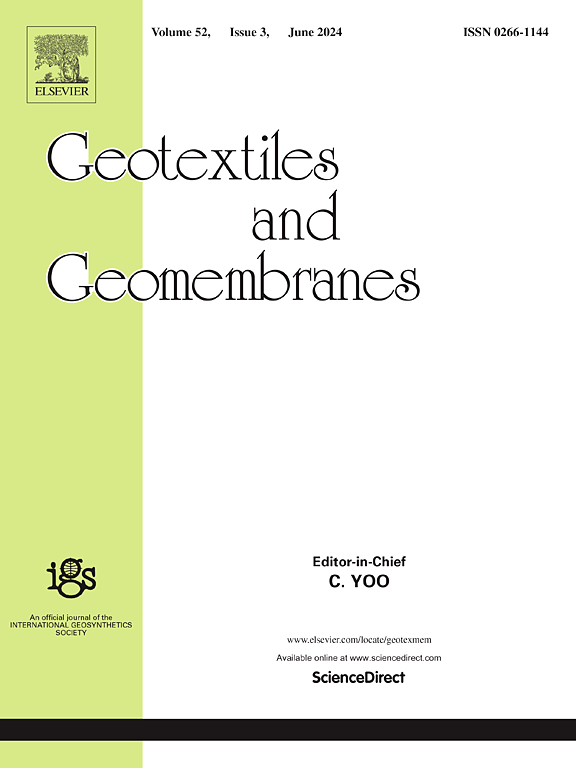考虑衬垫系统内 GMB-GCL 界面强度参数的垃圾填埋场地震诱发变形预测修正方法
IF 6.2
1区 工程技术
Q1 ENGINEERING, GEOLOGICAL
引用次数: 0
摘要
本研究提出了一种预测地震引起的滑动位移的创新方法,这是评估垃圾填埋场地震稳定性的一个关键决定因素。这项研究的新颖之处在于将土工合成材料界面的软化特性纳入了衬垫系统,而这一因素在以往的研究中大多被忽视。使用 ABAQUS 软件对垃圾填埋场进行了动态稳定性分析,重点关注耦合参数的影响,尤其是界面强度。结果表明,PGA(峰值地面加速度)、PGV(峰值地面速度)、Ia(阿里亚斯强度)和残余界面剪切强度 (μ) 是有效的预测参数。研究进一步确定了 PGA 和 μ 的组合是预测垃圾填埋场地震永久变形的最佳参数组合。采用多维数据回归方法,提出了地震永久变形的计算公式,并考虑了衬垫的损坏。为了加强垃圾填埋场的抗震设计方法,研究中还纳入了概率密度函数。这一创新方法为垃圾填埋场工程和设计中的地震稳定性评估提供了新的视角。本文章由计算机程序翻译,如有差异,请以英文原文为准。
Modified approach for predicting seismic-induced deformation of landfills considering strength parameters of GMB-GCL interface within the liner system
This study presents an innovative methodology for predicting seismic-induced sliding displacement, a key determinant in evaluating the seismic stability of landfills. The novelty of this research lies in the incorporation of the softening characteristics of the geosynthetic interface within the liner system, a factor that has been largely overlooked in previous studies. A dynamic stability analysis was performed on a landfill using the ABAQUS software, with an emphasis on the impact of coupled parameters, particularly the strength of the interface. The results highlight PGA (Peak Ground Acceleration), PGV (Peak Ground Velocity), Ia (Arias Intensity), and residual interface shear strength (μ) as effective predictors. The study further identifies the combination of PGA and μ as the optimal parameter pairing for predicting the seismic permanent deformation of the landfill. A multi-dimensional data regression approach was employed to propose a calculation formula for seismic permanent deformation, taking into account liner damage. To enhance the seismic design methodology for landfills, the probability density function was integrated into the study. This innovative approach provides a new perspective on seismic stability assessment in landfill engineering and designs.
求助全文
通过发布文献求助,成功后即可免费获取论文全文。
去求助
来源期刊

Geotextiles and Geomembranes
地学-地球科学综合
CiteScore
9.50
自引率
21.20%
发文量
111
审稿时长
59 days
期刊介绍:
The range of products and their applications has expanded rapidly over the last decade with geotextiles and geomembranes being specified world wide. This rapid growth is paralleled by a virtual explosion of technology. Current reference books and even manufacturers' sponsored publications tend to date very quickly and the need for a vehicle to bring together and discuss the growing body of technology now available has become evident.
Geotextiles and Geomembranes fills this need and provides a forum for the dissemination of information amongst research workers, designers, users and manufacturers. By providing a growing fund of information the journal increases general awareness, prompts further research and assists in the establishment of international codes and regulations.
 求助内容:
求助内容: 应助结果提醒方式:
应助结果提醒方式:


